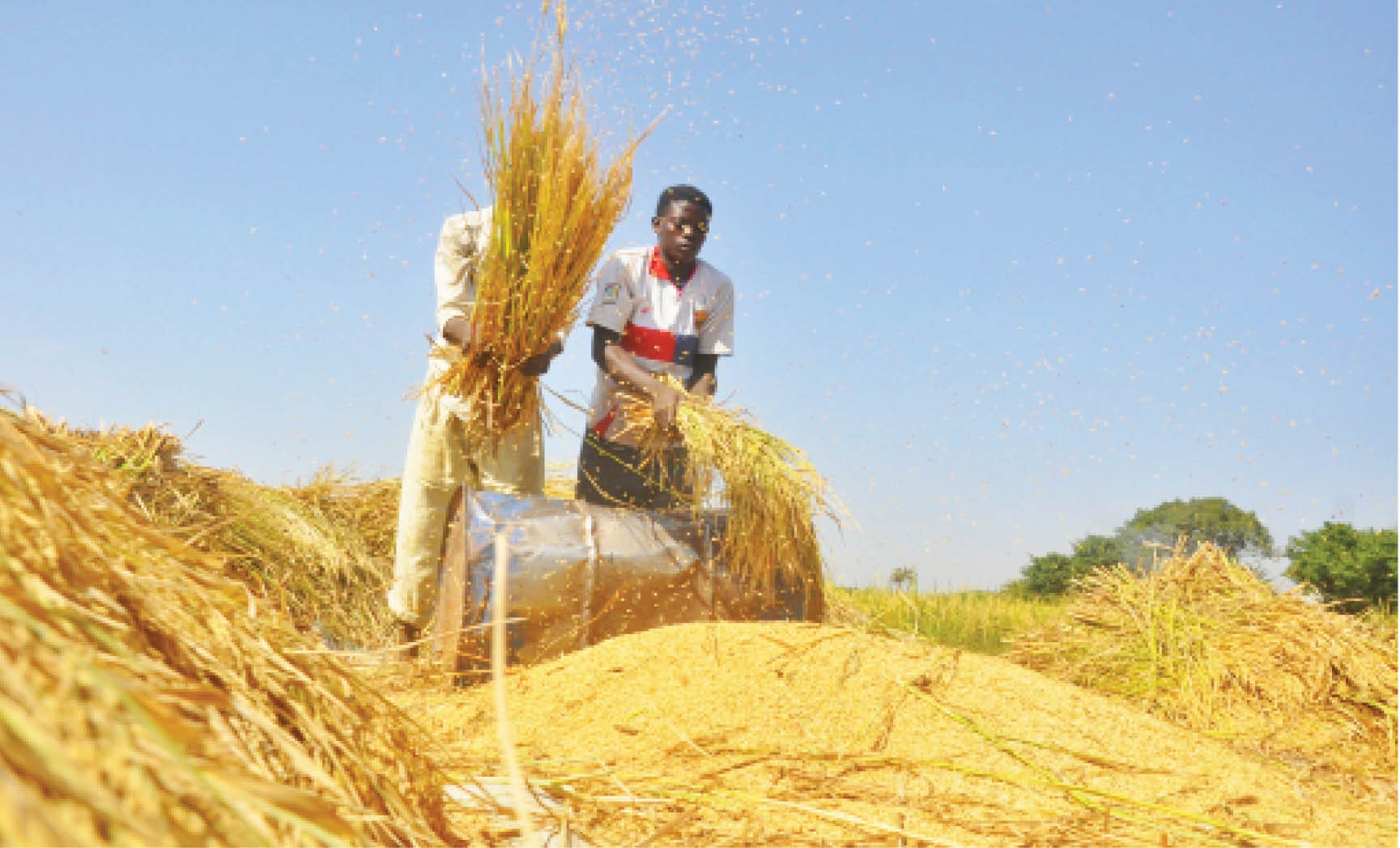Nigeria’s endless quest for rice sufficiency
Globally, rice is a staple food to over 50 per cent of people and human consumption accounts for about 78 per cent of global production. The remaining 22 per cent goes into feeds’ production. In Nigeria, rice is one of the major staple foods consumed across all geo-political zones and socioeconomic classes. We’re Reinventing Northern […]

Nigeria’s endless quest for rice sufficiency
Globally, rice is a staple food to over 50 per cent of people and human consumption accounts for about 78 per cent of global production. The remaining 22 per cent goes into feeds’ production.
In Nigeria, rice is one of the major staple foods consumed across all geo-political zones and socioeconomic classes.
- We’re Reinventing Northern Nigeria’s Rich Heritage- Director, Arewa House
- Nigeria Lacks Enough Personnel To Guarantee Security – Akinyemi
It is the most celebrated grain and its consumption in the country is driven by both population and economic growth.
Recent statistics have shown that only about 57 per cent of the 6.7 million metric tonnes of rice consumed in Nigeria annually is locally produced, leading to a supply deficit of about three million metric tonnes.
With a population of over 200 million and continuously growing, it is expected that the demand for rice will increase in the nearest future.
In view of this, successive governments have sunk billions of naira into its production, particularly in the last ten years. Despite that, Nigeria was until recently the largest importer of the produce, bringing in about 3.1 million metric tonnes of milled rice.
According to PwC Nigeria, rice is the “most consumed staple in Nigeria, with consumption per capita of 32kg. In the past decade, consumption has increased by 4.7 per cent, almost four times the global consumption growth, and reached 6.4 million tonnes in 2017 – accounting for 20 per cent of Africa’s consumption.”
As at 2011, rice accounted for 10 per cent of household food spending and 6.6 per cent of total household spending.
With the population growth of almost 3 per cent per annum, there is serious pressure to increase domestic production, consumption, and cut down the huge import bill which stands at more than $2 billon.
While the country has made significant progress by increasing domestic production, there appears to be conflicting statistics on production.
The Minister of Agriculture and Rural Development, Alhaji Sabo Nanono, recently, said Nigeria last year recorded a boost in the production of the staple crop, adding that the data from the ministry showed that rice production was about 14.28 million metric tonnes.
However, many are skeptical about that figure since the country is yet to achieve self-sufficiency in the production as many rice mills across the country are operating below their capacity because of paddy scarcity.
Also, despite the claimed achievements in the country’s rice revolution efforts, prices of milled rice are still high in the market.
Consumers believe rice is becoming unaffordable to the common man as its price continues to rice even at the beginning of harvest.
A 50kg bag of local rice, which few years ago sold between N10,000 and N12,000 now goes for between N24,000 and N26,000.
Stakeholders in the sector are attributing the rise in the prices to long time smuggling activities, but there are other challenges confronting the farmers.
One of them is lack of access to good mechanization. Many smallholder farmers, who constitute the largest constituent in rice production do not have access to mechanization. Harvest is still being done manually with local tools and most grains are lost in the process.
Secondly, the cost of production remains very high for the smallholder farmers in the country. The cost of fertilizer, agrochemicals and labour make it increasingly difficult for the farmers to increase their productivity and make good money.
Also, there is poor linkage between research institutes and farmers, which affects their awareness to adopt new rice technology.
Since the early 1990s, extension services have declined in the country. Although President Muhamadu Buhari promised in his New Year message to engage about 50,000 extension workers, that has not happened, a situation that affects farmers’ yields.
Rice production in Nigeria has remained largely a wet season affair because many farmers across the country do not have access to irrigation facility. Most of the dams constructed decades ago have either collapsed or neglected. This puts farmers in a difficult situation because during the wet season, it is difficult to control certain elements that affect production such as the recent flood disaster that washed away rice farms in the north and draught in the south.
To address these challenges, development of irrigation facilities across the country and resuscitation of the abandoned dams should be given serious priority. This will allow farmers have three circles of production.
“Nigeria’s mechanisation gap provides numerous opportunities for investment across the agricultural value chain. To attract the required investment, the government needs to create an enabling environment that ensures profitability.
“In terms of priorities, the government should concentrate on addressing challenges around land tenure and ownership, providing rural infrastructure and extension services, and ensuring incentives are transparent and accessible to all investors,” PwC Nigeria, a professional services provider suggested.
In this special publication, we bring you the country’s efforts to achieve self-sufficiency in rice and the major actors working to turn this dream into reality.
